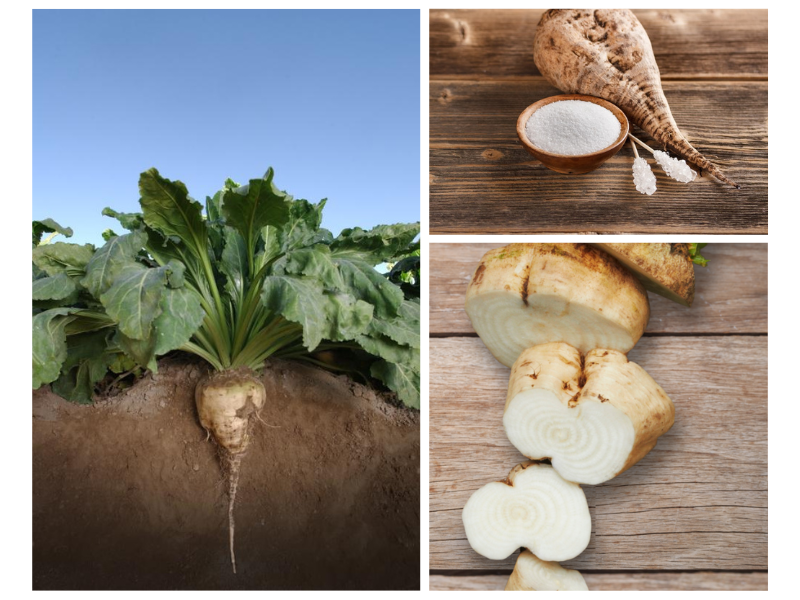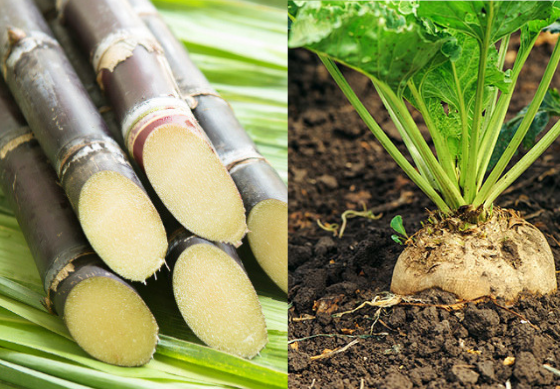The Ultimate Contrast: Beet Sugar vs. Cane Sugar Explained
The comparison between beet sugar and cane sugar presents an interesting expedition of 2 predominant sweeteners in the cooking globe. While both sugars share an usual make-up of sucrose, their beginnings, refining techniques, and flavor accounts deviate substantially. This difference extends past preference, affecting dietary elements and environmental impacts related to their manufacturing - beet sugar vs cane sugar. As we browse with these different variables, the implications for both manufacturers and consumers end up being increasingly obvious, increasing an important concern: which sugar really reigns supreme in the complex landscape of sweet taste?
Origins of Sugar Resources
The beginnings of sugar sources are primarily rooted in 2 distinct plants: the sugar beet and the sugar cane. Sugar cane, an exotic turf indigenous to Southeast Asia, has been cultivated for over 2,500 years.
On the other hand, sugar beet is a reasonably modern-day resource, developed in Europe throughout the late 18th century as a reaction to sugar cane shortages. The plant thrives in warm climates, making it appropriate for growing in areas such as France and Germany. The effective extraction of sugar from beetss noted a significant agricultural innovation, as it offered a different to cane sugar, particularly during periods of profession disruption.
Both plants have played critical functions in shaping the worldwide sugar industry. Their unique development environments and historic contexts illustrate the diversity of sugar sources, eventually affecting local farming methods and economic growth.

Handling Approaches Clarified
Various handling approaches are utilized to extract sugar from both sugar beet and sugar cane, each tailored to the specific characteristics of the resource material. In the instance of sugar beetss, the procedure begins by collecting the root and then cleaning it to get rid of soil and contaminations.
On the other hand, sugar cane processing involves a various approach. The cleared up juice is focused through evaporation, comparable to beet sugar processing, prior to formation happens. Both procedures culminate in the production of raw sugar, which might undertake further refining to achieve the desired purity and quality.
Nutritional Differences

When contrasting beet sugar and cane sugar, remarkable dietary differences arise, though they are usually refined. Both sorts of sugar are primarily composed of sucrose, giving about the very same calorie material-- roughly 4 calories per gram. The differences exist in their trace mineral web content and the presence of certain substances that might have very little nutritional implications.
Beet sugar has percentages of calcium, potassium, and iron, while cane sugar typically offers a little higher focus of these minerals. In addition, cane sugar may preserve even more natural molasses during handling, which can add to trace quantities of anti-oxidants and other advantageous compounds. This is specifically true for less polished varieties, such as helpful resources raw cane sugar.
In spite of these differences, both beet and cane sugars are predominantly composed of straightforward carbs, with a high glycemic index, resulting in comparable effects on blood sugar level levels. Because of this, while there are small nutritional differences, the general wellness effect of eating either key in small amounts stays greatly comparable. beet sugar vs cane sugar. Individuals looking for to minimize sugar consumption for health and wellness reasons should think about both kinds with equivalent analysis, concentrating on total dietary patterns instead of the source of sugar
Preference Profiles Contrasted
Taste accounts of beet sugar and cane sugar show distinct qualities that can affect their cooking applications. Cane sugar, frequently viewed as having a much more intricate, nuanced sweet taste, is acquired from the high turf of the sugar cane plant.
In contrast, beet sugar, extracted from sugar beetss, is understood for its cleaner, extra straightforward sweetness. This high quality makes it especially appropriate for dishes calling for a neutral artificial sweetener that allows other flavors to shine. Some culinary experts suggest that beet sugar might leave a somewhat natural aftertaste, which can be unwanted in fragile treats.
Additionally, the understanding of sweet taste intensity ranges the two, with some tasters identifying cane sugar as visit site sweeter compared to beet sugar at equivalent measurements. Inevitably, the selection in between beet and cane sugar might rely on the details application, with each sugar offering one-of-a-kind attributes that can boost or enhance numerous recipes. Recognizing these distinctions permits notified decisions in cooking techniques.

Ecological Effect
The environmental effect of sugar production-- whether from beet or cane-- has gathered increasing focus over the last few years as a result of its ramifications for sustainability and ecological wellness. Both sugar sources show unique ecological impacts, influenced by farming methods, land usage, and resource usage.
Cane sugar manufacturing typically necessitates big locations of tropical land, which can cause deforestation and loss of biodiversity. In addition, the cultivation of sugarcane is frequently connected with high water usage and significant chemical and plant food application, adding to soil deterioration and water air pollution.
On the other hand, beet sugar is mostly grown in temperate regions, normally calling for less water and land. Its cultivation can still involve the use of chemical inputs, affecting neighborhood ecological communities. The energy-intensive processing of beet sugar can contribute to greenhouse gas discharges.
Lasting farming methods and developments in modern technology are essential for alleviating the environmental effects of sugar production. Organic farming approaches, integrated insect administration, and effective water usage can enhance the sustainability of both beet and cane sugar sectors, inevitably leading to a reduced ecological impact and a much healthier planet.
Conclusion
In summary, the comparison in between beet sugar and cane sugar highlights more information both similarities and distinctions that affect their application. While both kinds of sugar share a main composition of sucrose, their taste accounts, processing approaches, and ecological impacts differ considerably. Cane sugar is identified by its intricate sweet taste, while beet sugar provides a much more uncomplicated preference. Eventually, the choice in between these two sugars should be assisted by certain culinary demands and environmental factors to consider, permitting informed decision-making.
The beginnings of sugar sources are largely rooted in two unique plants: the sugar beet and the sugar cane.Numerous processing techniques are employed to draw out sugar from both sugar beet and sugar cane, each tailored to the details attributes of the resource material.Beet sugar consists of small amounts of potassium, calcium, and iron, while cane sugar normally offers slightly higher focus of these minerals.Despite these differences, both beet and cane sugars are predominantly composed of basic carbohydrates, with a high glycemic index, leading to similar results on blood sugar degrees. Cane sugar, frequently viewed as having a much more complex, nuanced sweet taste, is acquired from the high grass of the sugar cane plant.